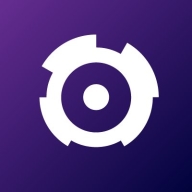

Pico Corvil Analytics and OP5 Monitor are competing in network performance and infrastructure monitoring. OP5 Monitor is favored for its features, while Pico Corvil Analytics offers superior data-driven insights.
Features: Pico Corvil Analytics provides real-time analytics, detailed visibility into network performance, and comprehensive data analysis. OP5 Monitor features extensive monitoring capabilities, flexibility in different environments, and customizable solutions.
Room for Improvement: Pico Corvil Analytics could benefit from simplified setup processes, reduced resource requirements for implementation, and improved user interface complexity. OP5 Monitor might improve by expanding advanced analytic features, offering deeper data insights, and enhancing real-time performance metrics.
Ease of Deployment and Customer Service: OP5 Monitor offers straightforward deployment, robust support services, and smoother transitions with ongoing maintenance. Pico Corvil Analytics has a more complex setup demanding extensive resources and expertise for effective implementation.
Pricing and ROI: Pico Corvil Analytics requires a higher initial investment but provides significant ROI with advanced data analysis capabilities. OP5 Monitor offers an affordable pricing structure, delivering good value for organizations focused on efficient and pragmatic infrastructure monitoring.
| Product | Market Share (%) |
|---|---|
| OP5 Monitor | 0.7% |
| Pico Corvil Analytics | 0.5% |
| Other | 98.8% |


| Company Size | Count |
|---|---|
| Small Business | 2 |
| Large Enterprise | 5 |
| Company Size | Count |
|---|---|
| Small Business | 2 |
| Midsize Enterprise | 1 |
| Large Enterprise | 6 |
OP5 Monitor - The Complete Monitoring Solution
OP5 Monitor is a flexible and highly scalable monitoring solution for all sizes of environments. Use just one product to monitor your IT environment regardless of location, whether on-premise, in dynamic environments, public cloud or a hybrid of these.
Digital transformation adds extra layers and complexity to the IT estate by creating a hybrid IT environment of both static and dynamic environments, that can be difficult to monitor efficiently. ITRS OP5 Monitor gives enterprises full visibility over their entire IT estate through a single pane of glass, allowing them to consolidate monitoring tools and cut down costs.
We monitor all Network Monitoring Software reviews to prevent fraudulent reviews and keep review quality high. We do not post reviews by company employees or direct competitors. We validate each review for authenticity via cross-reference with LinkedIn, and personal follow-up with the reviewer when necessary.